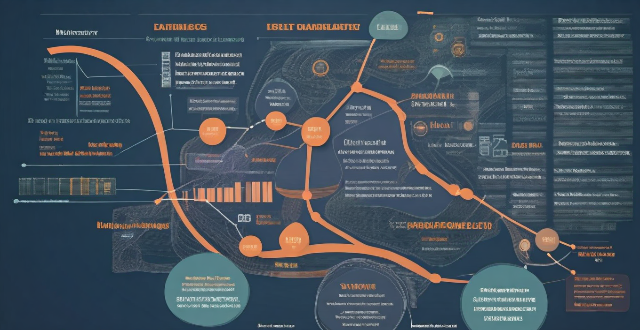Job Instructor

What is the difference between a personal trainer and a fitness instructor ?
The article discusses the differences between a personal trainer and a fitness instructor. Personal trainers design customized workout plans for individual clients, while fitness instructors lead group exercise classes. Personal trainers require certification from accredited organizations like NASM or ACE, while fitness instructors need certification from reputable organizations like AFAA or IDEA. Personal trainers often work in private settings with one-on-one clients, while fitness instructors typically work in public settings leading group classes. Both professions require dedication and continuous learning to stay up-to-date with the latest trends and techniques in the fitness industry.

What kind of training does a fitness instructor need ?
To become a fitness instructor, one needs a high school diploma or equivalent, certification programs like Certified Fitness Instructor (CFI), specialized certifications, practical skills in anatomy, physiology, first aid, teaching and communication. Continuing education is important to stay updated with trends and research. Personal qualities such as passion for health, patience, empathy, leadership, and motivational skills are crucial. Business and marketing skills including client relations management and social media presence are also necessary.

Can I take online fitness instructor courses ?
Yes, you can definitely take online fitness instructor courses. In fact, there are many reputable organizations that offer online certification programs for aspiring fitness instructors. Here are some key points to consider: ## Benefits of Online Fitness Instructor Courses 1. **Flexibility**: Online courses allow you to learn at your own pace and on your own schedule. This is especially beneficial for those who have other commitments such as work or family responsibilities. 2. **Cost-effective**: Online courses are often more affordable than traditional in-person training programs. You can save money on travel expenses and accommodation costs. 3. **Wide range of options**: There are numerous online fitness instructor courses available, covering various areas of expertise such as yoga, Pilates, strength training, and more. 4. **Access to expert trainers**: Many online courses are taught by experienced and certified fitness professionals who share their knowledge and expertise through video lectures, interactive quizzes, and practical assignments. 5. **Continuous learning**: Online courses provide an opportunity for continuous learning and development. You can revisit the course materials anytime and stay up-to-date with the latest trends and techniques in the fitness industry. 6. **Career advancement**: Completing an online fitness instructor course can enhance your resume and open up new career opportunities within the fitness industry. ## How to Choose an Online Fitness Instructor Course When selecting an online fitness instructor course, consider the following factors: - **Accreditation**: Ensure that the course is accredited by a reputable organization or institution. This will ensure that the program meets industry standards and provides valuable credentials upon completion. - **Course content**: Check the course outline and make sure it covers all the necessary topics related to fitness instruction, including anatomy, physiology, exercise techniques, programming, and safety guidelines. - **Instructor qualifications**: Look for courses taught by experienced and certified fitness professionals who have a proven track record in the industry. - **Learning resources**: Ensure that the course provides access to high-quality learning resources such as video lectures, e-books, practice exercises, and interactive quizzes. - **Support and feedback**: Choose a course that offers regular support and feedback from instructors or mentors throughout the program. - **Community engagement**: Look for courses that provide opportunities for engagement with other students and fitness professionals through forums, discussion groups, or social media platforms. - **Pricing**: Compare the pricing of different online fitness instructor courses and choose one that fits your budget while offering quality education and resources.

What is the role of a fitness instructor in a gym ?
A fitness instructor is responsible for guiding and motivating gym members to achieve their fitness goals. Their roles include designing customized workout plans, providing personal training sessions, leading group fitness classes, educating members on health and fitness topics, and maintaining a clean and safe environment. The ultimate goal of a fitness instructor is to help members reach their fitness objectives and improve their overall health and well-being.

How do I choose the right fitness instructor course for me ?
Choosing the right fitness instructor course is crucial for your career development and personal growth in the fitness industry. Before diving into course selection, clarify your objectives and research courses that offer the training and certifications you require. Consider factors such as accreditation and certification, curriculum and content, instructor qualifications, reviews and testimonials, cost and duration, hands-on experience, location and accessibility, support system, and alignment with personal values. Finally, trust your instincts and choose the course that feels right for you.

What are the latest trends in fitness instructor courses ?
The latest trends in fitness instructor courses include virtual training, functional training, group training, and mindfulness and wellness. Virtual training has become more popular due to the pandemic, with a focus on creating engaging online workouts and using technology to enhance the training experience. Functional training emphasizes overall physical function through multi-joint movements and balance, coordination, and flexibility exercises. Group training offers high-intensity interval training (HIIT) sessions, small group personal training, and team-building exercises. Mindfulness and wellness practices are being integrated into workouts, with guidance on stress management and mental health provided by fitness instructors. These trends reflect the evolving needs of clients and the importance of overall wellness in achieving fitness goals.

What are the job prospects for fitness instructors ?
The fitness industry is experiencing steady growth, driven byThe fitness industry is experiencing steady growth, driven by of regular exercise, rise in This growth has led to a rise in job opportunities for fitness instructors across various settings such as gyms, corporate wellness programs, community centers, and online platforms. Fitness instructors can also expect career growth through specialization, certification, management, or entrepreneurship. Overall, the job prospects for fitness instructors are promising with numerous opportunities for career advancement.

How can I improve my teaching skills as a fitness instructor ?
This article provides tips on how to improve teaching skills as a fitness instructor. It suggests developing knowledge of fitness and exercise science, enhancing communication skills, creating engaging workouts, and continuously evaluating and improving teaching methods. The article emphasizes the importance of staying up-to-date with current research and best practices, practicing active listening and empathy, designing well-rounded fitness programs, fostering a supportive community within classes, seeking feedback from clients, and reflecting on one's own performance. By following these tips, fitness instructors can provide higher quality service to their clients and achieve better client outcomes.

What are the benefits of becoming a fitness instructor ?
Becoming a fitness instructor offers numerous benefits, including improved physical health, opportunities for personal growth, flexible schedules, job satisfaction, and potential for career advancement.

How much does a fitness instructor course cost ?
The cost of a fitness instructor course can vary depending on the type of certification, location, duration, and extra costs. It is important to research all potential costs before making a decision to ensure that the course fits both your budget and career goals.

How does automation affect job security ?
Automation affects job security by increasing efficiency, causing job displacement, creating a skill gap, and generating new job opportunities. To mitigate its effects, individuals should continuously learn and adapt, while organizations should offer reskilling programs and implement progressive policies.

How has social distancing impacted the economy and job market ?
Social distancing measures have had a significant impact on the economy and job market, including decreased consumer spending, supply chain disruptions, high unemployment rates, increased demand for remote work, and changes in job seeking behavior.

How will AI impact the job market in the future ?
The impact of AI on the job market is multifaceted. While it brings opportunities for increased efficiency and novel professions, it also presents challenges related to job displacement, skill shifts, inequality, and the need for adaptive policies. The future of work in an AI-driven world will require a collaborative effort from individuals, businesses, and governments to navigate these changes effectively.

How will climate change influence future job markets ?
The article discusses how climate change will influence future job markets. It highlights the increased demand for green jobs, a shift toward resilient industries, and potential declines in certain sectors that contribute to greenhouse gas emissions or rely heavily on fossil fuels. Additionally, remote work opportunities may rise due to extreme weather events and environmental concerns. The article concludes by emphasizing the need for individuals and organizations to adapt to these changes in the job market.

How does climate change influence job security in coastal regions ?
Climate change significantly impacts job security in coastal regions through direct effects such as sea level rise, increased storm intensity, and changes in ocean temperatures. These environmental changes directly affect industries like fishing, tourism, agriculture, and infrastructure, leading to job losses or reduced hours for employees. Indirectly, climate change can cause economic displacement, public health concerns, and policy changes that create new job opportunities while potentially reducing jobs in other sectors. Addressing these challenges requires coordinated efforts from various stakeholders to adapt to changing conditions and transition towards more resilient economic systems.

How does private equity impact job creation and retention ?
Private equity (PE) has a significant impact on job creation and retention, primarily through investing in underperforming companies, supporting startups and small businesses, and engaging in strategic acquisitions and mergers. PE firms also contribute to job retention by providing stable funding, investing in employee training programs, and participating in succession planning. While some argue that PE prioritizes short-term profits over long-term job growth, others contend that PE plays a crucial role in promoting economic stability and workforce development.

How might a lunar base influence the global economy and job market ?
The establishment of a lunar base could significantly impact the global economy and job market by increasing investment in space technology, creating new industries, driving innovation, and fostering international collaboration. It could also create numerous job opportunities and expand educational opportunities focused on space-related disciplines.

How do I become a certified fitness instructor ?
To become a certified fitness instructor, you need toTo become a certified fitness instructor, you need to pass a certification exam, participate participate in continuing education, gain experience, build a network, consider specialization, and adhere to ethical standards.

What certifications should I get as a fitness instructor ?
To become a certified fitness instructor, it's crucial to obtain essential certifications like CPR/AED, personal training, group fitness instruction, and specialty areas of interest. Participating in continuing education will help you stay current and relevant in your field.

What skills do I need to be a successful fitness instructor ?
Successful fitness instructors need a blend of knowledge, communication skills, motivational abilities, physical prowess, and safety awareness to guide clients effectively towards their fitness goals. Key areas include understanding anatomy for safe workout design, obtaining certification and continuing education, demonstrating strong interpersonal and communication skills, keeping clients motivated with positive reinforcement, creating customized workout plans, maintaining personal fitness for credibility, and being prepared for emergencies with first aid knowledge.

How do climate goals affect the economy and job market ?
Climate goals, aiming to reduce greenhouse gas emissions and promote renewable energy sources, significantly impact the economy and job market. The growth of the renewable energy sector creates new business opportunities and jobs, while carbon pricing mechanisms incentivize companies to invest in cleaner technologies. Green infrastructure investments stimulate economic growth by creating jobs and improving public health. However, achieving climate goals can also displace workers in fossil fuel-dependent industries, necessitating support and training programs for transitioning into new roles within the green economy. Education and training focused on sustainability and renewable energy are crucial to meet the demands of the changing job market. Overall, prioritizing climate goals presents challenges but also offers numerous opportunities for economic growth and job creation in industries related to sustainability practices.

How long does it take to complete a fitness instructor course ?
The duration of a fitness instructor course can vary depending on the type of certification, intensity of the program, and level of experience. Basic personal training certification may take 6-8 weeks, while advanced sports nutrition certification may take up to 6 months. Programs may offer full-time or part-time options, and the level of experience of the individual can also impact the duration. It is important to choose a program that aligns with your goals and schedule.

How do exercise programs impact employee productivity and job satisfaction ?
Exercise programs have a significant impact on employee productivity and job satisfaction. Companies can improve employee health, reduce stress levels, enhance team building, increase energy levels, improve mental clarity and cognitive function, reduce absenteeism and tardiness, enhance work-life balance, increase motivation and engagement, and improve company culture and retention rates by promoting a healthy lifestyle and providing opportunities for physical activity. Implementing exercise programs should be considered a valuable investment for any organization looking to improve its overall performance and success.

Can anyone try kitesurfing or is it only for professionals ?
Kite surfing, or kiteboarding, is a water sport that combines elements of windsurfing, surfing, paragliding, and gymnastics. It involves using a kite to be propelled by the wind on or over water. While it does take some skill and training to master, anyone who is physically fit and comfortable in the water can learn to kite surf. However, it should always be learned under the guidance of an experienced instructor due to the potential risks involved. To learn kite surfing, one needs to be physically fit, have a good level of swimming skills, understand wind and water conditions, have proper equipment, and take lessons from a certified instructor. Safety precautions such as learning from a qualified instructor, wearing proper safety gear, checking weather conditions, staying away from crowded areas, and knowing one's limitations are also important. In conclusion, while kite surfing may seem like a sport reserved for professionals, anyone can try it with proper training, equipment, and safety precautions.

How can we prepare for the changing job landscape in the future ?
The future job landscape is constantly evolving, and it's important to stay ahead of the curve. Here are some ways to prepare for the changing job landscape: 1. **Continuous Learning**: Upskill or reskill to remain relevant in the job market, take advantage of online courses, and attend workshops and seminars related to your field. 2. **Adaptability**: Embrace change, be open to new ideas, and be flexible in your job search. 3. **Networking**: Build professional relationships, attend events, join professional organizations, and connect with people on platforms like LinkedIn. Conduct informational interviews with professionals in your field. 4. **Technology Proficiency**: Stay tech-savvy and familiarize yourself with popular tools and software used in your industry. Consider learning basic coding skills. 5. **Personal Branding**: Establish an online presence through platforms like LinkedIn, Twitter, and personal websites. Showcase your expertise by publishing articles and participating in discussions. By focusing on these areas, you can position yourself for success in the ever-evolving job market.

How does a sedentary lifestyle affect job productivity and overall health ?
This article discusses the negative impacts of a sedentary lifestyle on job productivity and overall health. It outlines how prolonged periods of sitting can lead to decreased energy levels, impaired cognitive function, and increased stress and anxiety in the workplace. It also highlights the increased risk of chronic diseases such as heart disease, diabetes, and obesity, as well as musculoskeletal issues and poor mental health associated with a sedentary lifestyle. The article concludes by emphasizing the importance of incorporating regular physical activity into daily routines and maintaining a healthy work-life balance to improve job performance and overall well-being.

How does Fintech influence the job market in the finance industry ?
The influence of fintech on the job market in the finance industry has led to the creation of new roles and changes in the skillset required for existing positions. Fintech companies have increased demand for software developers, data scientists, and cybersecurity experts. Additionally, specialized financial roles like fintech startup founders, regulatory compliance officers, and customer experience managers have emerged. Traditional finance roles such as bankers, accountants, and investment advisors now require proficiency in digital tools and an understanding of automation and data analytics. As technology continues to advance, the finance industry workforce will need to adapt continuously to stay relevant in the changing job market.

How can we ensure job security in an ever-changing employment landscape ?
In the ever-changing employment landscape, job security is a concern for many professionals. To maintain job security, strategies such as continuous learning, adaptability, networking, performance orientation, personal branding, career planning, financial planning, and mental health management are recommended. These approaches can help professionals stay relevant, demonstrate value, build a positive image, set clear goals, save for emergencies, manage stress, and seek support when needed. By implementing these strategies, individuals can increase their resilience and adaptability, enhancing their job security.

What are the best fitness instructor courses available ?
This article provides an overview of the best fitness instructor courses available, including certifications offered by the National Academy of Sports Medicine (NASM), American College of Sports Medicine (ACSM), International Sports Sciences Association (ISSA), Aerobics and Fitness Association of America (AFAA), and Yoga Alliance. The duration, cost, and accreditation of each course are also discussed.

How can personal safety training be tailored to different risk levels and job roles within an organization ?
Personal safety training is crucial for protecting employees. Tailoring this training to different risk levels and job roles ensures that each employee receives the specific knowledge and skills needed for their work environment. This involves identifying risk levels, defining job roles, developing tailored training programs, incorporating practical exercises, and continuously updating and evaluating the training's effectiveness.